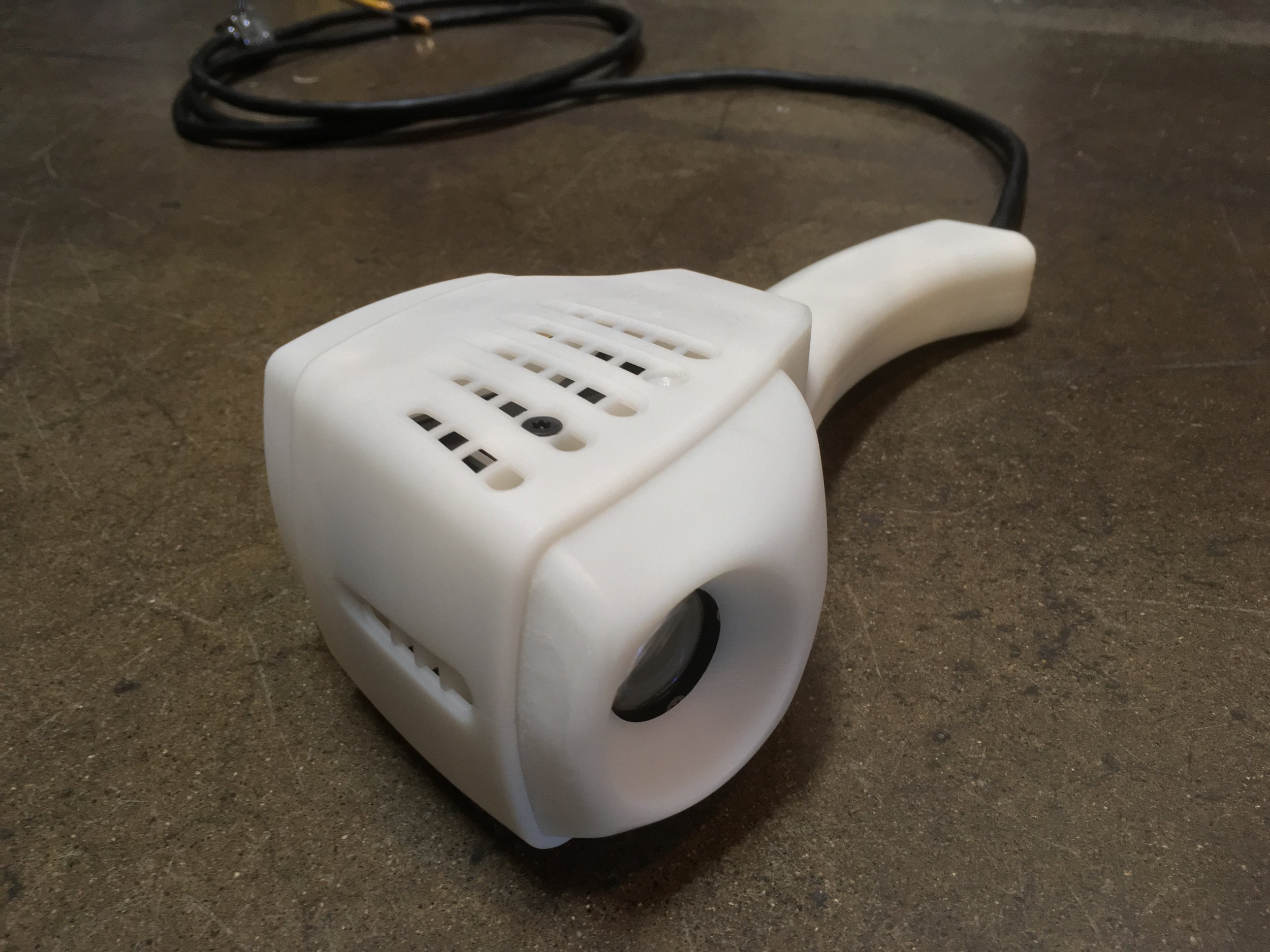Firefly
Designed with JDID for Bales Photonics
This was a redesign of a light therapy handheld intended for clinic and at-home use. The device had to be comfortable for a specialist to use on a patient, and for an individual to use on themself.
Initial Review
Our intro to this project was a review of the client’s first prototype (designed by another group). The cooling vents would blow hot air onto the user’s hand, there were moldability issues, and the device had a “forehead” that would limit where it could move on a human body.
My solution was to request that the clients consider allowing us to flip the light assembly upside down. With some hesitation from the client, I proved the idea by creating a quick foam mockup of what the new head shape could be, and letting them try it out. Safe to say they were convinced. By flipping the internals it became easier to route hot air up and away from the user.
Exploration
The request was for a refined, friendly design that didn’t come across as a typical medical device. We based the handle on forms utilized by products that have to be comfortable to hold when pointing at yourself or someone else. Blow dryers and detachable shower heads are what came to mind first.
Mock-ups
Sure, the handle had to look good, but the most important part was that it felt comfortable any way the user needs to hold it. As for the head and switch panel; we had to figure out how to bring some “friendly” curvature to rather blocky internals. We worked with client to figure out how much surface area had to be given to the heatsink intake and fan outlet. Luckily, we had plenty of open surfaces to work with on the enclosure. The head, control panel, and handle were developed in different phases, so the mock-up build turned out to be three interchangeable sections.
Functional Prototype
Pleasant Surprise
We did not have access to functioning internals during the design process. So, we were excited when the client plugged in the real internals and lit up the SLA model. This captured the Firefly idea and allowed the user to confirm the light color when adjusting settings. The translucent fascia carried over into production.






















